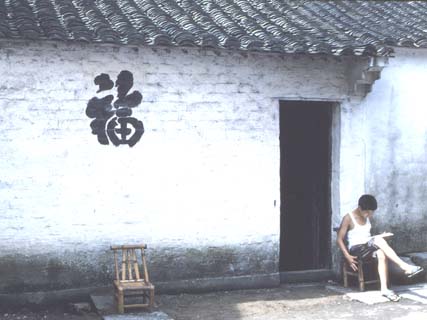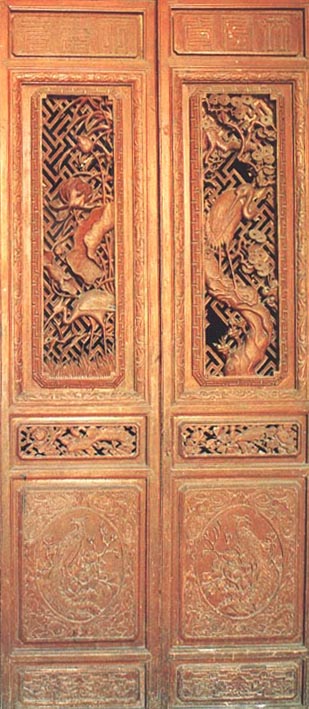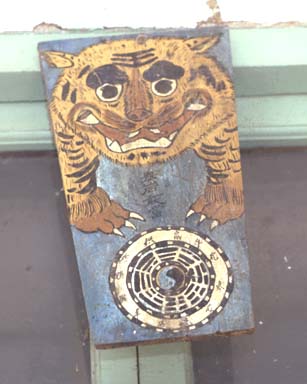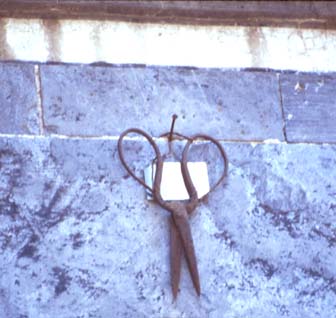|
The decoration of houses can be traced to a combination of practical concerns, folk beliefs, and pure ornamentation. Walls and eaves are often decorated, but particular attention is paid to doorways and windows because these are places where good or evil spirits were thought to enter. Elegant decorative schemes would also provide ventilation or shading.
Many openings would be covered with latticework in an endless variety of patterns that "shape the wind" or alter the way air flows into a home. |
|
|
In the image at right, the lattice in the doors serves several functions. Can you think of some of them? |
|
|
One way to summon good fortune is to invoke the character fu, seen on the wall to the right. Fu can be translated as "happiness," "good fortune," "blessings," or "luck." |
|
|
|
|
Not only is the character
fu auspicious, but representations of homonyms of fu are also good luck.
|
|
|
|
|




 Another character thought to express longevity is
wan which means "ten thousand." This character is often represented stylistically as a backwards swastika, such as on the lattice work to the left.
Another character thought to express longevity is
wan which means "ten thousand." This character is often represented stylistically as a backwards swastika, such as on the lattice work to the left.



